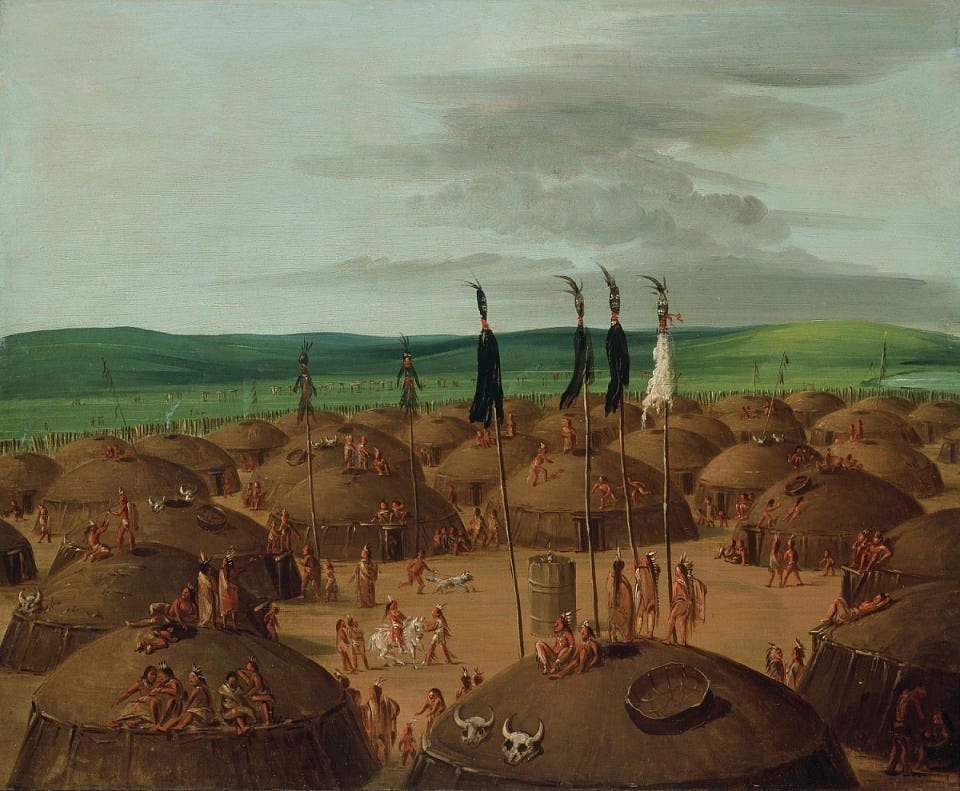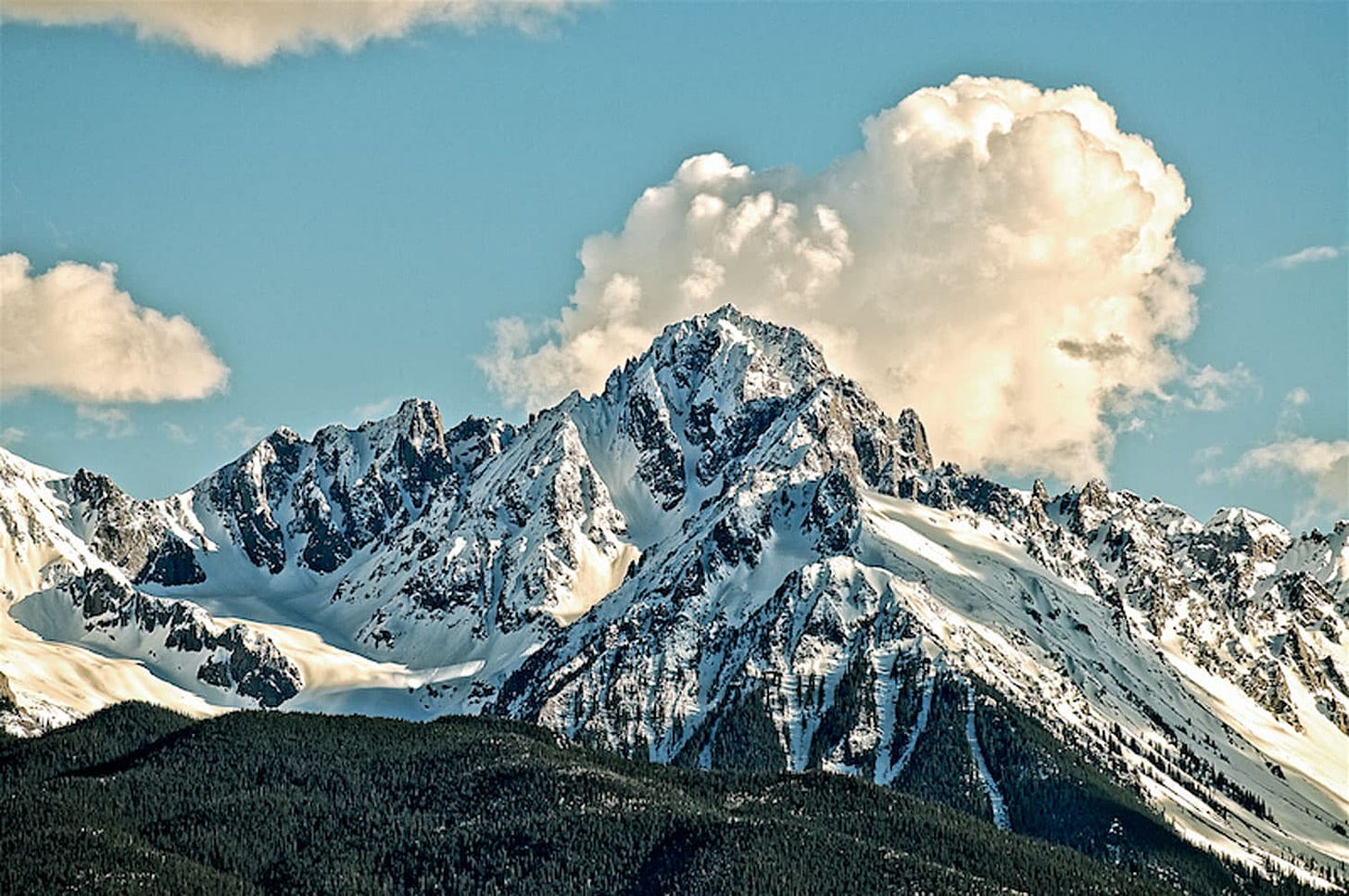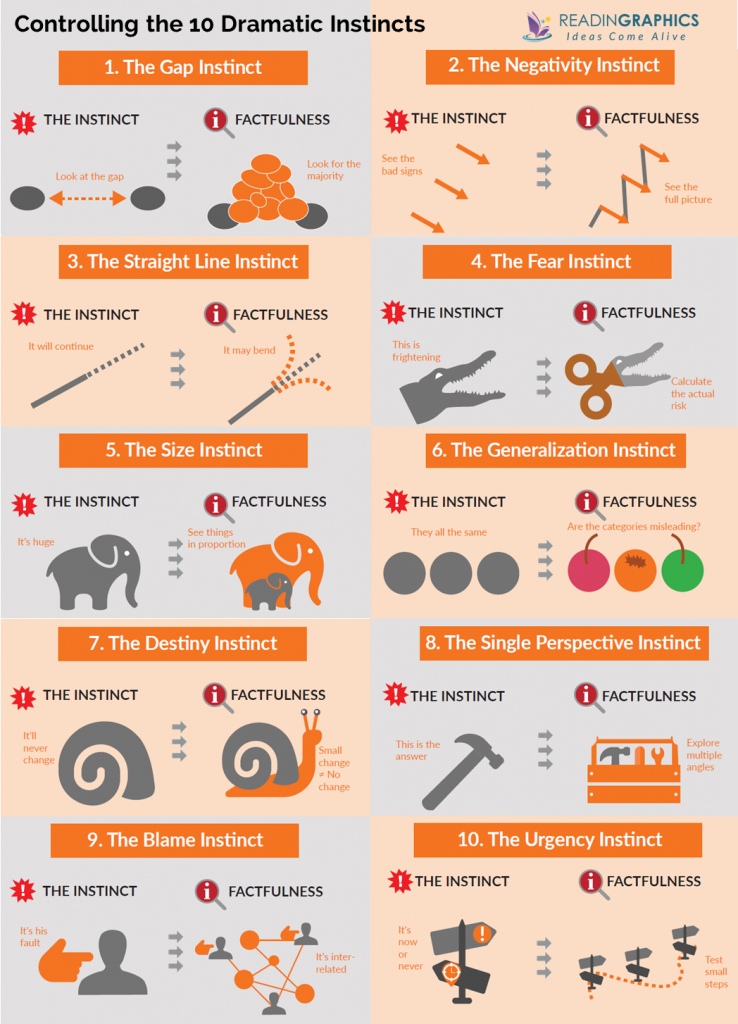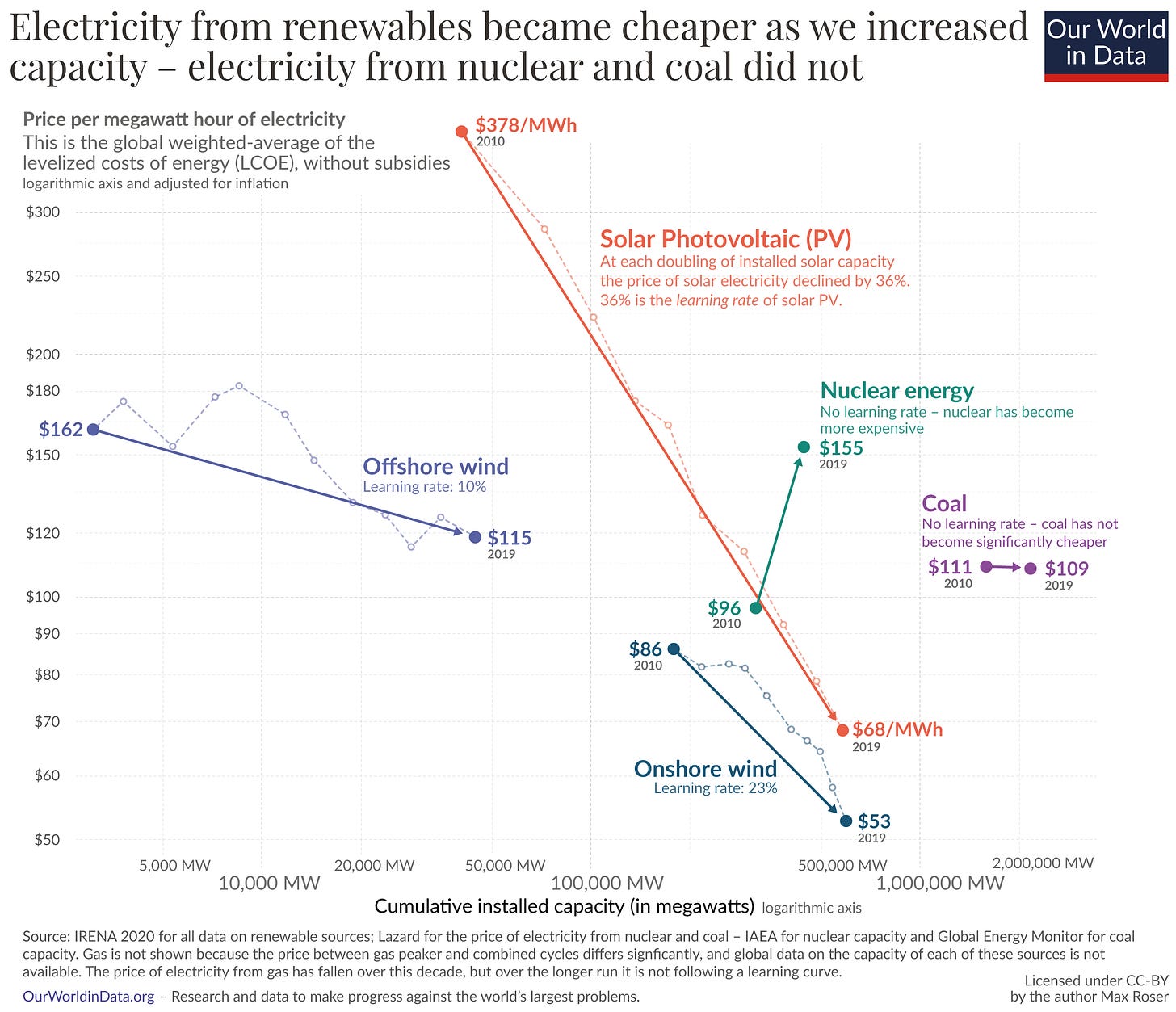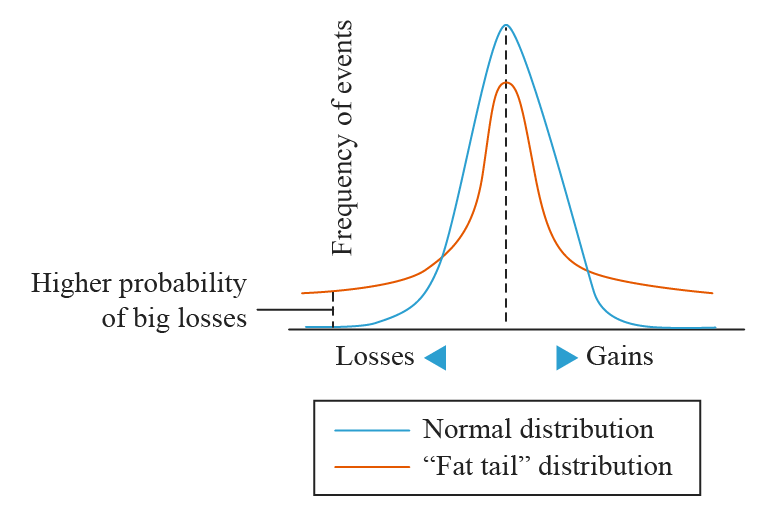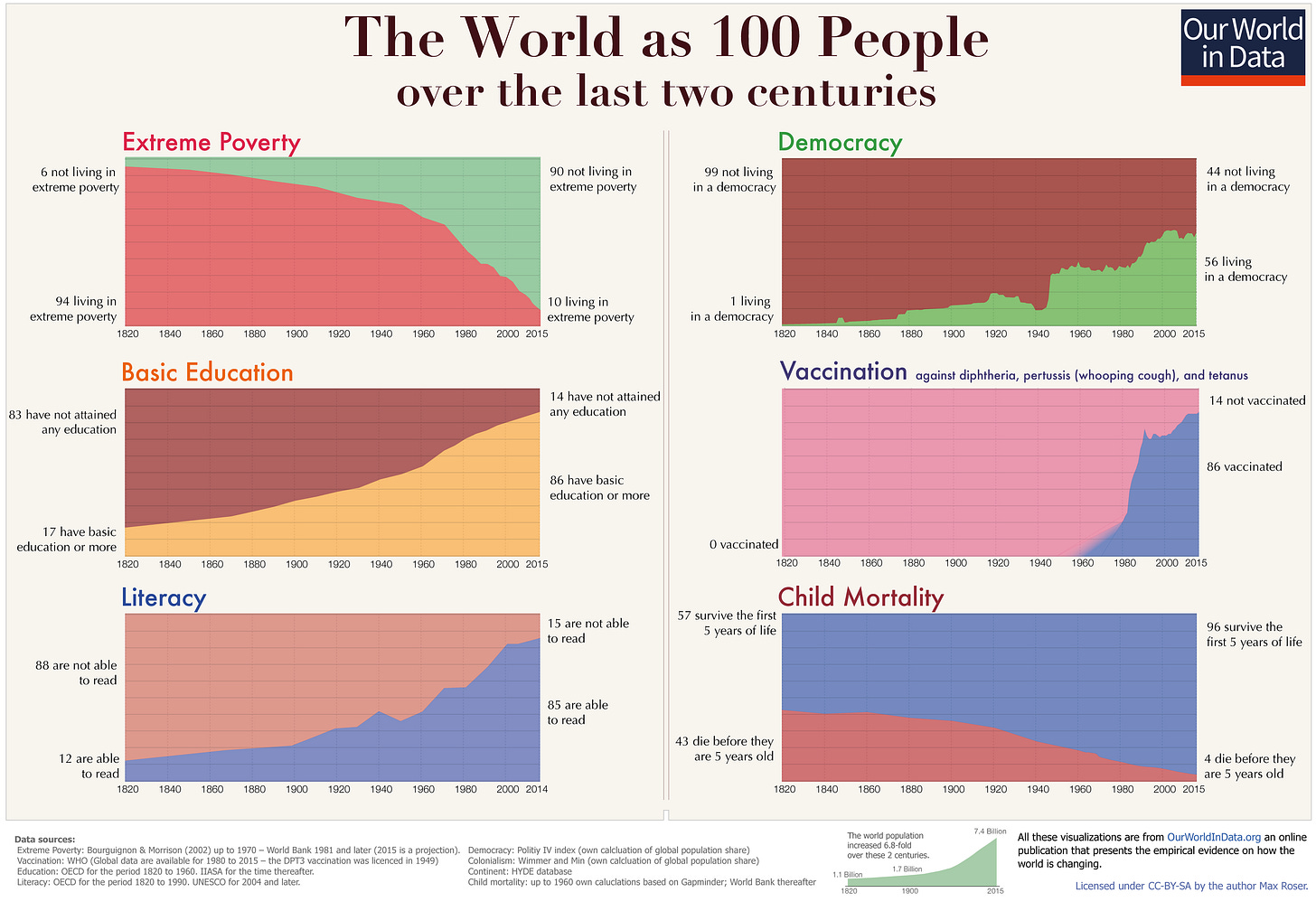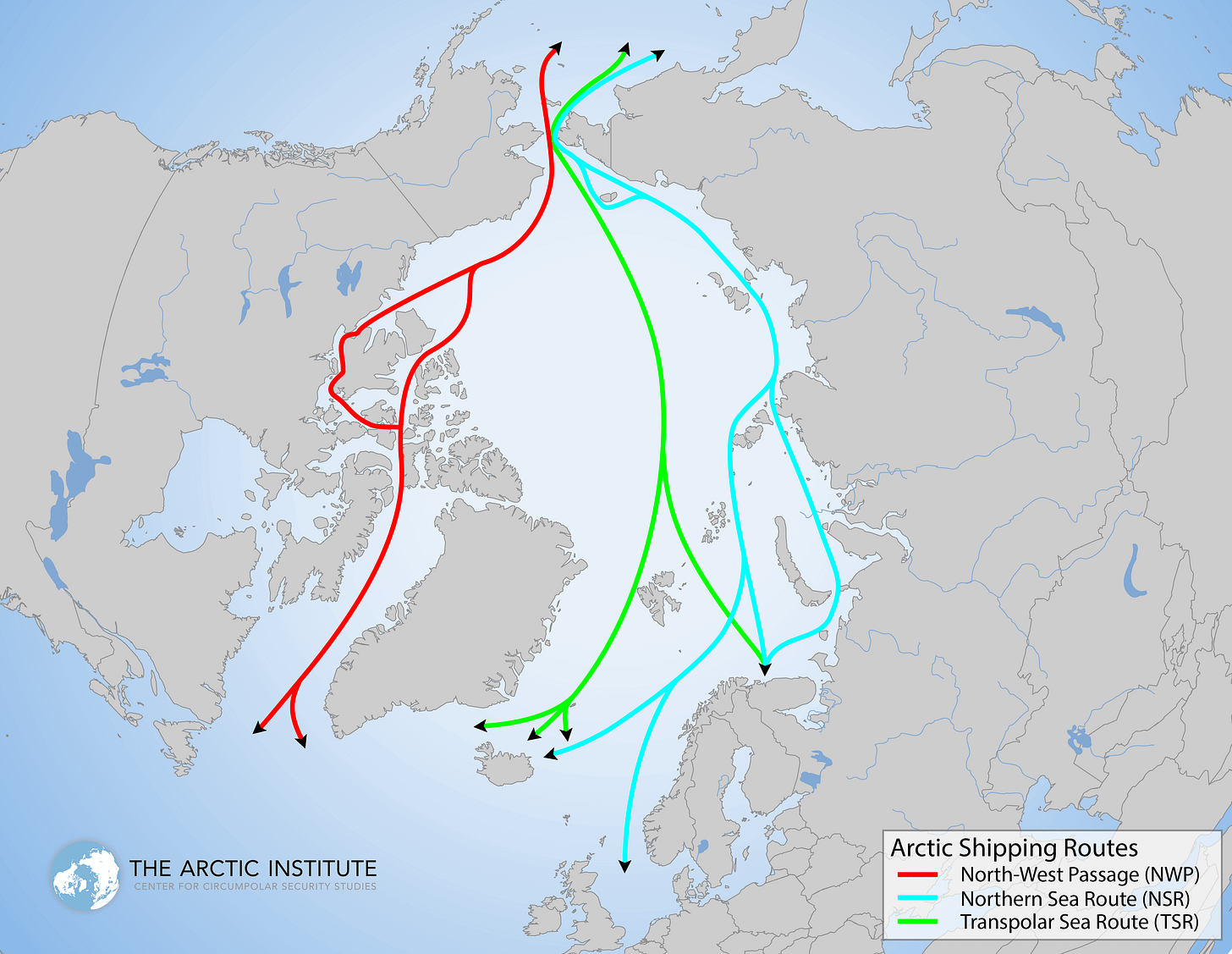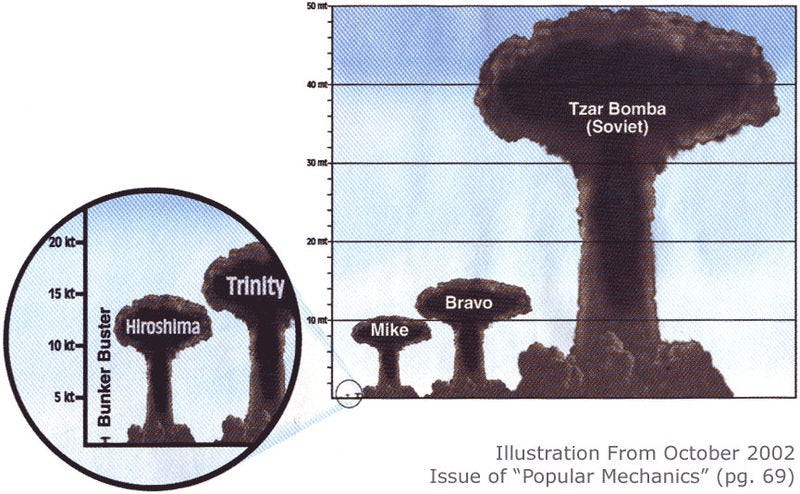Climate Change Doesn't Have to Mean the Apocalypse
The Climate is Not Your Friend - And That's OK
The climate is not an isolated phenomenon; it emerges from the dynamic interplay of interconnected systems: geophysical, ecological, cosmic, and biological. All the interacting elements reflexively push and pull on each other creating unpredictable outputs.
While perturbations in one system (e.g., deforestation or Milankovitch orbital variations) ripple through the others and create cascading effects, the lack of simple, linear, cause and effect dynamics make forecasting near impossible. There’s no local forecast for the weather in your town on this day a year from now.
Fundamentally, this means it is not knowable whether a climate 2 degrees warmer is substantially worse than one 1 degree warmer or considerably better than one 4 degrees warmer. Being in the bucket of the unknowable means no amount of research can move it into the knowable. The only certainty about our future climate is that it will be different.
At a moment in history where people earnestly debate the morality of bringing children into the world due to climate change, I intend to lay out the following case:
The climate is not and has never been on the side of humans
Policy won’t save us but technology will
Cognitive biases have grossly distorted the climate conversation
The path forward into an uncertain future is to build and not panic
The Myth of the Benevolent Biosphere
The Spaceship Earth theory imagines our planet as a perfectly engineered vessel speeding through the cosmos at 67,000 miles per hour. On board, generations of passengers live and die, sustained by a self-contained biosphere—clean, recycling, life-giving, powered by a nuclear sun reactor. It’s a nice story, but it’s just that: a story.
The Spaceship Earth myth contains echoes the oldest human narratives—the Garden of Eden of Judaism, the Hesiod’s Greek Golden Age, the Hindu’s Satya Yuga, the Nordic Asgard, the Tibetan Shangri-La, Rousseau’s Noble Savage—visions of harmony, balance, and simplicity. These stories share a fatal flaw: they assume nature is on our side, a virtuous system built top down for our benefit and we are its caretakers.
George Catlin, Bird’s-eye View of the Mandan Village, 1800 Miles Above St. Louis, 1837-1839, oil on canvas
This is anthropocentrism, the most human of errors. The belief that Earth is here for us. That its systems are designed to sustain us. The anthropocentric view of our place in the natural world is intuitive, comforting, and utterly wrong. Nature is not benevolent. It is not even neutral. Rather, nature is actively hostile.
Anthropocentrism, like the geocentrism of the Middle Ages, has historically begot harmful oversights, delayed progress and self inflicted crisis by being off mark in describing the material world.
The actual biosphere is not a nurturing garden; it is a brutal, self-regulating complex system that filters life through the merciless mechanisms of natural selection—competition, extinction, and inequality. In the Great Rift Valley, the “Cradle of Humankind,” proto-humans didn’t thrive because of the biosphere—they survived in spite of it. No clean water. No shelter. Predators, parasites, and plagues everywhere. Most living things died horrible deaths—starved, frozen, baked, eaten, or infected.
And this isn’t some historical anomaly. Natural living systems exist in perpetual crisis, just at the edge of survival. It is the default state of nature.
Populations outgrow food supplies. Resources dwindle. Mass death restores the balance of biological systems via the four levers of war, conquest, famine and pestilence. Forward progress in nature comes not from organic life support systems, but through the ruthless extinction of what does not work. The climate existed long before organic life scratched its way into emergence.
Albercht Dürer, The Apocalypse, the Four Horseman, 1498, Woodcut
The settlers of Manifest Destiny weren’t welcomed and supported by an open frontier—they encountered starvation, disease, hostile landscapes and people. The most common cause of pediatric death on the Oregon Trail was falling between and being crushed by the wagon wheels. Native American history reminds us that one group’s opportunity is another group’s ruin; in the natural world, one group’s unknown horizon is another group’s ancestral home.
Nature doesn’t care about equality, freedom, or fairness. It hasn’t read the American Declaration of Independence nor the The French Declaration of the Rights of Man. In nature, pursuing your own interests freely comes at the expense of perfect equality with others. All mammals have to eat their energy. The tension between freedom and equality isn’t a social construct; it’s a natural law.
The entire mechanism is mostly a practice in subtraction.
The pre-Enlightenment and post-Enlightenment views of humanity share the same anthropocentric arrogance. We either put ourselves at the center of the universe or pretend we have dominion over it. Neither is true. Nature doesn’t serve humanity. It kills indiscriminately, lubricating its innovation engine through perpetual, systemic competitive destruction.
The biosphere is not your friend. The climate is not your life support system. Humans are not and have never been the benevolent caretakers the climate, which existed a long time before it ever had a human name.
In order to propagate the causal structure of the human species, we have always had to build the life support system ourselves.
Humans Have Always Built Our Own Life Support System
A recent report from Citizens Climate International reveals a stark truth: despite trillions of dollars spent globally, only 4.6% of climate action policies have succeeded over the last 20 years. This suggests a misalignment of capital with effective outcomes, inefficiency in policy and capital deployment and need for better leverage points. The levers of policy, even when backed by trillions in capital, are weak and slow-moving tools.
Fortunately policy is only one tool in humanity’s toolkit—and it has never been the primary one that solves our biggest challenges.
The biosphere has no intrinsic priority to support human life, no moral posture, no care for human survival. It is a hostile, indifferent system. We survive not because Earth is designed for us but because we have learned to build technology—to construct artificial life support systems where none exist.
A pile of raw minerals forged in a supernovae strewn about the Earth and a stream of energy from the sun is not enough. An overemphasis of climate policy spending without accountability is not enough. Evolution gave us opposable thumbs, not instruction manuals. Nature provides the ingredients but we must still grasp for a solution through experimentation. It was knowledge—hard-earned, painstakingly discovered—that turned raw minerals into steel, fire into energy, and chaos into civilization.
Consider this: I’m writing this from the mountains of Colorado in December. If I walked outside without clothing or shelter, I would die of exposure in hours. The natural world doesn’t care about my survival. It’s not a nurturing home; it’s a death sentence. We don’t live on Spaceship Earth. We are not passengers. We are the architects, the engineers, and the captains of our own technological life support system.
Mount Sneffels, 14,153’, Colorado
Common Biases That Corrupt the Climate Change Discussion
The morality of a civilization evolves alongside its technology. Hunter-gatherers lived by different rules than agricultural societies. The industrial age shifted those rules again. And today, in the digital era, technology has fundamentally altered what we can achieve, what we consider moral, and how we perceive risk.
But here’s the problem: we don’t see the world as it actually is. We see it through a dramatic attention filter—a filter built into us over millions of years of evolution. Humans are wired to overestimate threats because, for our ancestors, underestimating a threat usually meant death. This bias was survival-enhancing in the wild, but it wreaks havoc on our understanding of modern, complex, probabilistic systems.
In his book Factfulness, Hans Roslings outlines strategies to recognize and control our dramatic filter instincts.
Catastrophe sells. Nuance does not. Headlines highlight outliers and worst-case scenarios, creating a distorted sense of reality. As traditional media has atomized into social media which atomized into individual influencers, the trappings of personalized distortion generating content feeds continues to increase. In this new media landscape, isolated scientific disagreement becomes a false “gap” in consensus when meanwhile, 97%+ of climate scientists agree on human-caused climate change.
Humans tend to extrapolate trends linearly. Pessimists see leading data trends and conclude: apocalypse is inevitable. Optimists cling to magical thinking: the climate will fix itself. Neither is true. The future is neither binary nor linear. It’s a continuum of probabilities shaped by human action—particularly technological innovation.
So why wouldn’t humanity bend the trend line? When has human ingenuity failed to rise to the challenge of existential threats? The Green Revolution solved global hunger. Vaccines eradicated diseases. Renewable energy, particularly solar, is scaling faster than anyone predicted 20 years ago.
Complex dynamic systems exhibit “fat tailed” outcome distributions rather than normal distributions, meaning there is a higher probability of extreme events occurring to the upside and downside. Combine this structural feature with our dramatic attention filter and sociological groupthink, via authority bias and social proof, tends to simultaneously over estimate the risks and also underestimate the benefits.
However, progress is real. To avoid our tendency to underestimate the benefits, let’s look in the rearview mirror and ask: what has humanity gained in exchange for its industrial carbon emissions?
Global poverty is collapsing and on track to hit zero
Famines have virtually disappeared outside of war zones
Child labor and child mortality are at all time lows while child cancer survival is at all time highs
The marginal cost of energy production is dropping towards zero
Natural disaster deaths are down 99% in the past 100 years
War between countries has become unprecedentedly rare (but does still occur) as food, energy and resources have become abundant
Democracies are expanding while autocracies are declining
It’s essential to realize that progress does not mean everything is immediately better for everyone, everywhere at the same time. Progress is not the same as a miracle.
Only you can answer for yourself if all that relief of human suffering was worth the cost of industrial emissions.
Climate Change Doesn’t Have to Mean the Apocalypse
So here’s the good news: nowhere in the recent Intergovernmental Panel on Climate Change (IPCC) report are climate scientists warning us to prepare for the apocalypse. There will be no dramatic, Hollywood-style climate change event. No singular apocalypse. Climate change is already here.
“If I had to rate odds, I would say the chances of climate change driving us to the point of human extinction are very low, if not zero,” says Adam Schlosser, the Deputy Director of the MIT Joint Program on the Science and Policy of Global Change
The impacts of climate change will vary significantly by region. Low-lying coastal areas and deserts are likely to become less habitable, but we shouldn’t overlook the potential upsides: warming could make currently inhospitable regions—like parts of Canada, Russia, and Scandinavia—more arable and livable. Meanwhile, the melting polar ice is already fueling competition for control of newly accessible Arctic shipping routes.
Technologies will evolve to mitigate the worst effects. The rise of AI is likely to drive a renaissance in materials science, enabling the synthesis of new elements and the advanced chemical doping of existing ones to unlock groundbreaking applications. Solutions will emerge at the speed of progress—incrementally, unevenly, and quietly. And humans will adapt and migrate, just as we always have.
Here’s the irony: if humanity succeeds in blunting climate change, the doomsayers will never admit they were wrong. If disaster strikes, they will claim victory for predicting it. Either way, the path-dependent process of solutions will be erased by hindsight bias and everyone will agree it was inevitable all along.
The real world doesn’t unfold that way. The real world is messy. It’s ambiguous. It evolves in real time through experimentation, iteration, and innovation. Progress doesn’t come from certainty. It comes from human action—building in the face of uncertainty.
People always have and always will crave the certainty of the apocalypse. But to sit in the discomfort of ambiguity is to sit within the actual geometry of the universe.
American historian Will Durant writes: “Every day the sea encroaches somewhere upon the land or the land upon the sea; cities disappear under the water, and sunken cathedrals ring their melancholy bells. Mountains rise and fall in the rhythm of emergence and erosion; rivers swell and flood, or dry up, or change their course; valleys become deserts, and isthmuses become straits. To the geologic eye all the surface of the earth is a fluid form, and man moves upon it as insecurely as Peter walking on the waves to Christ.”
In my view, the real immediate existential threat isn’t carbon emissions—it’s nuclear war. If you wanted to be a single issue voter, that would be it. Climate change isn’t the end of the story but the latest in a long series of crisis that humanity has conquered.
No one is coming to save us. There is no magical policy, no benevolent planet, no divine intervention. There’s only us—humans, doing what we’ve always done: adapt, migrate and solve problems by building solutions.
Zoom out if you really want to get existentially stressed. Eventually the Earth and its climate will be swallowed by the sun, which will explode and wipe everything clean. If humans fail to colonize space extinction is already, right now, a certainty.
But today’s climate crisis? An existential threat?
Climate change is not the end. It’s just the next chapter in humanity’s endless cycle of migration, adaptation and building. It’s really important to internalize that history is just one thing after another. Fortunately, the history of humanity has been on balance additive rather than mostly a practice in subtraction.
Its easy to forget how one piece of new technology can transform the way we build and solve problems. So don’t panic. Instead, build, and the opportunities will multiply. Because if we don’t, the sun is coming for us anyway.
Nuclear war is the only immediate existential threat, so stop scaring your kids about climate change.

